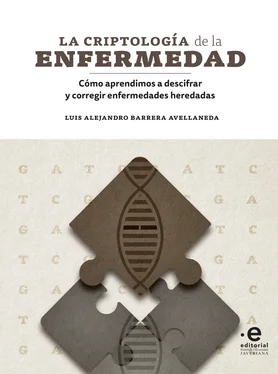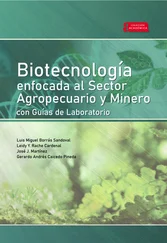Si el paciente Engels de seis años y medio descrito al comienzo de este capítulo, estudiado por Folling, fuera traído a consulta hoy día, se le podría identificar rápidamente la fenilcetonuria y tratar con dieta restringida en fenilalanina para detener la progresión de la enfermedad en la parte neurológica, dermatológica y mejorar su comportamiento. Igualmente, se le podría determinar con facilidad si respondía a BH4, y en caso de que lo fuera, se le podría tratar con dicho complemento, además de la dieta. El paciente tendría que someterse de por vida a dieta restringida en proteínas, pero tendría a su alcance suplementos más agradables al gusto que las fórmulas tradicionalmente usadas para su tratamiento. Es probable que en su juventud pudiera comer pizza, pastas, chocolates, embutidos y otros alimentos especiales para fenilcetonúricos.
Y en el caso de que los padres decidieran tener otro hijo, sería posible, inmediatamente después del nacimiento, determinar si sufriría o no de la enfermedad y se podría instaurar un tratamiento antes de que apareciera la sintomatología. Es posible que ese hermano, aun cuando se hubiera tratado, tuviera algunas dificultades motrices y de memoria, pero su cociente intelectual podría ser muy cercano al cociente intelectual de sus padres.
Y en el caso de que la madre Engels tuviera una nueva pareja, y este se sometiera al examen, en el muy probable caso de que no fuera portador de la enfermedad, VIIno tendrían riesgo de tener hijos afectados; pero, si también resultara portador, podrían optar por fecundación in vitro, realizar análisis del ADN de los embriones para seleccionar para el implante uno que no portara las mutaciones y así evitar la enfermedad.
Carol, la hija de Pearl Buck, no se hubiera beneficiado mucho del tratamiento para su déficit cognitivo por haberse diagnosticado muy tardíamente. Según su hermana, la niña sí creció, y aunque tenía limitación para comunicase, progresó en sus habilidades musicales, en su cuidado personal y para alimentarse; montaba en triciclo y patinaba. No aprendió a leer ni a escribir; murió de cáncer de pulmón, lo mismo que su madre, en 1990, después de haber vivido más de 60 años en Vineland, lo que muestra que los pacientes PKU pueden vivir muchos años, a menos que sobrevengan otras complicaciones.
Pearl Buck, la premio nobel, libró una batalla consigo misma para aceptar la condición de su hija, pero una vez publicó su historia personal, parece que exorcizó sus frustraciones y fue una muy activa defensora de los niños con deficiencias. Sus libros influenciaron las familias de dos grandes líderes de la época, John Kennedy y Charles de Gaulle, debido a que en ambas familias había personas con limitaciones cognitivas. Sus campañas fueron también muy importantes para dar a conocer la fenilcetonuria y para la aceptación del tamizaje neonatal en los años sesenta. Su historia es la de la mayoría de los padres de hijos con enfermedades genéticas, pasan de la negación a la comprensión y aceptación de la enfermedad genética sin culpas, y la mayoría de las veces con absoluto apego por el hijo.
1.Finger S, Christ SE. Pearl S. Buck and phenylketonuria (PKU). J Hist Neurosci. 2004/09/17. 2004;13(1):44–57.
2.Centerwall SA, Centerwall WR. The discovery of phenylketonuria: the story of a young couple, two retarded children, and a scientist. Pediatrics. 2000/01/05. 2000;105(1 Pt 1):89–103.
3.Christ SE. Asbjorn Folling and the discovery of phenylketonuria. J Hist Neurosci [Internet]. 2003/06/06. 2003;12(1):44–54. Available from: http://www.ncbi.nlm.nih.gov/entrez/query.fcgi?cmd=Retrieve&db=PubMed&dopt=Citation&list_uids=12785112
4.Nyhan WL. 50 years ago Asbjorn Folling and phenylketonuria Book Reviews An evolving textbook for undergraduates. 1984;(February):71–2.
5.Nyhan WL. Asbjorn Folling and phenylketonuria. Trends Biochem Sci. 1984;9(2):71–2.
6.Folling A, Sydnes S. A method for the estimation of phenylpyruvic acid in urine with some examples of its use in dietary treatment of phenylpyruvic oligophrenia. Scand J Clin Lab Invest. 1958/01/01. 1958;10(4):355–8.
7.Folling I. The Discovery of PKU | PKU News. In: PKU News. 1994.
8.Folling A. Über Ausscheidung von Phenylbrenztraubensäure in den Harn als Stoffwechselanomalie in Verbindung mit Imbezillität. Hoppe-Seyler's Zeitschrift für Physiol Chemie. 1934 Jan;227(1–4):169–81.
9.Folling A, Mohr O, Ruud L. Oligophrenia phenylpyrouvica. A recessive syndrome in man... 1945.
10.Jervis G. Phenylpyruvic oligophrenia: Introductory study of fifty cases of mental deficiency associated with excretion of phenylpyruvic acid. Arch Neurol. 1937.
11.Jervis GA. Phenylpiruvic Oligophrenia. Arch Neurol Psychiatry [Internet]. 1937 Nov;38(5):944. Available from: http://archneurpsyc.jamanetwork.com/article.aspx?doi=10.1001/archneurpsyc.1937.02260230042003
12.Penrose L, Quastel JH. Metabolic studies in phenylketonuria. Biochem J. 1937 Feb;31(2):266–74.
13.Jervis GA. Studies on phenylpyruvic oligophrenia; the position of the metabolic error. J Biol Chem. 1947 Aug;169(3):651–6.
14.Jervis GA. Phenylpyruvic oligophrenia deficiency of phenylalanine-oxidizing system. Proc Soc Exp Biol Med. 1953 Mar;82(3):514–5.
15.Bickel H. The first treatment of phenylketonuria. Eur J Pediatr. 1996 Jul;155 Suppl.:S2-3.
16.Bickel H, Gerrard J, Hickmans EM. Preliminary Communication. Lancet. 1953 Oct;262(6790):812–3.
17.Woolf LI, Griffiths R, Moncrieff A. Treatment of phenylketonuria with a diet low in phenylalanine. Br Med J. 1955/01/08. 1955 Jan;1(4905):57–64.
18.Kaufman S. Phenylalanine hydroxylation cofactor in phenylketonuria. Science. 1958 Dec;128(3337):1506–8.
19.Kaufman S. A new cofactor required for the enzymatic conversion of phenylalanine to tyrosine. JBC. 1958;(4):931–9.
20.Koch R, Acosta P, Ragsdale N, Donnell GN. Nutrition in the Treatment of Phenylketonuria. J Am Diet Assoc. 1963/09/01. 1963;43:212–5.
21.Koch R, Moseley K, Guttler F. Tetrahydrobiopterin and maternal PKU. Mol Genet Metab. 2005;86(SUPPL.).
22.Koch R, Trefz F, Waisbren S. Psychosocial issues and outcomes in maternal PKU. Mol Genet Metab. 2009;99(SUPPL.).
23.Opladen T, Abu Seda B, Rassi A, Thöny B, Hoffmann GF, Blau N. Diagnosis of tetrahydrobiopterin deficiency using filter paper blood spots: further development of the method and 5 years experience. J Inherit Metab Dis [Internet]. 2011 Jun;34(3):819–26. Available from: http://link.springer.com/10.1007/s10545-011-9300-1
24.Van Spronsen FJ, van Wegberg AM, Ahring K, Bélanger-Quintana A, Blau N, Bosch AM, et al. Key European guidelines for the diagnosis and management of patients with phenylketonuria. Lancet Diabetes Endocrinol. 2017;5(9):743–56.
25.Surtees R, Blau N. The neurochemistry of phenylketonuria. Eur J Pediatr. 2000;159 Suppl.:S109–13.
26.Blau N. Defining tetrahydrobiopterin (BH4)-responsiveness in PKU. J Inherit Metab Dis. 2008 Feb;31(1):2–3.
27.Acosta PB, Yannicelli S, Singh R, Mofidi S, Steiner R, DeVincentis E, et al. Nutrient intakes and physical growth of children with phenylketonuria undergoing nutrition therapy. J Am Diet Assoc. 2003 Sep;103(9):1167–73.
28.Cotugno G, Nicolò R, Cappelletti S, Goffredo BM, Dionisi Vici C, Di Ciommo V. Adherence to diet and quality of life in patients with phenylketonuria. Acta Paediatr. 2011;100:1144–9.
29.Schuett VE, Brown ES. Diet policies of PKU clinics in the United States. Am J Public Health. 1984;74(5):501–3.
30.Ney DM, Blank RD, Hansen KE. Advances in the nutritional and pharmacological management of phenylketonuria. Vol. 17, Current Opinion in Clinical Nutrition and Metabolic Care. 2014.
31.Specola N, Chiesa A. Alternative therapies for PKU. J Inborn Errors Metab Screen. 2016;5:1–5.
Читать дальше












